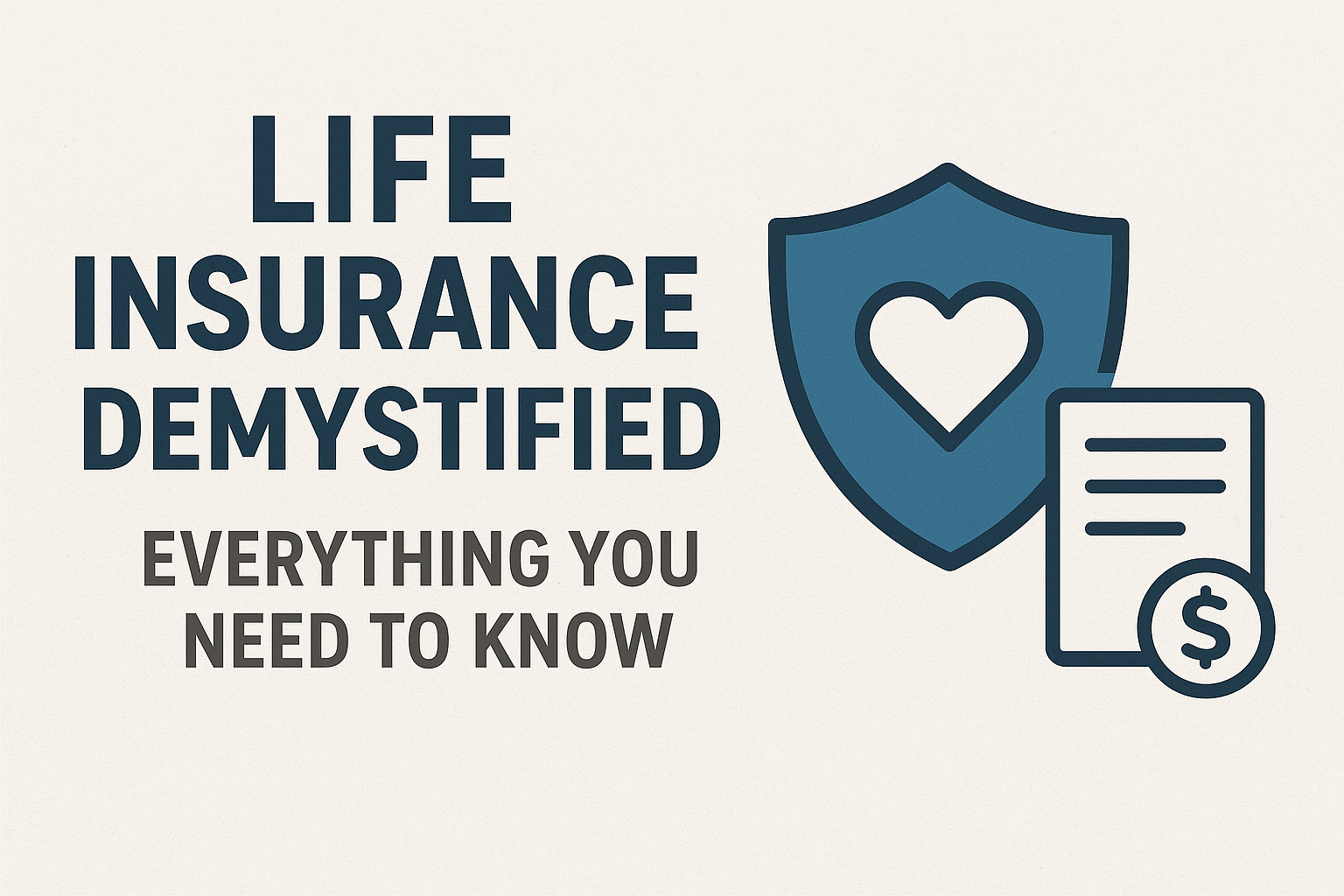In the fast-paced world of 2025, financial planning is more critical than ever, and few tools are as powerful—or misunderstood—as life insurance. Some see it only as a payout after death, while others view it as an unnecessary expense. The truth lies in between: life insurance is one of the most effective ways to ensure family financial security, protect wealth, and secure retirement stability.
This comprehensive guide will demystify life insurance, explaining its purpose, types, benefits, and how it fits into a robust wealth protection strategy.
What Is Life Insurance, Really?
At its core, life insurance is a contract between you and an insurance provider. You pay premiums, and in return, your beneficiaries receive a lump-sum death benefit if you pass away during the policy term. But modern life insurance goes far beyond that. It can:
- Replace income for your family
- Pay off debts and mortgages
- Cover children’s education expenses
- Supplement retirement income
- Support estate planning and tax strategies
- Build long-term savings
Life insurance isn’t just about protecting against loss—it’s about securing financial futures.
Why Is Life Insurance Essential?
1. Income Replacement
If you are the primary earner, your family depends on your income to cover daily expenses. Life insurance ensures that if something happens to you, your loved ones can maintain their lifestyle.
2. Debt Repayment
From mortgages to student loans, debts don’t disappear when you’re gone. Insurance prevents your family from being burdened with financial liabilities.
3. Retirement Security
Some permanent policies accumulate cash value that can supplement your retirement planning strategy.
4. Estate Planning and Wealth Transfer
High-net-worth families often use life insurance for estate planning, minimizing taxes and ensuring wealth passes smoothly to heirs.
5. Peace of Mind
At the end of the day, life insurance offers emotional security—you know your loved ones will be protected.
Types of Life Insurance (Simplified)
The wide range of policies can be confusing. Here’s a breakdown in plain English:
1. Term Life Insurance
- Provides coverage for a fixed period (10, 20, or 30 years).
- Affordable premiums and high coverage amounts.
- Ideal for income replacement during working years.
2. Whole Life Insurance
- Coverage lasts a lifetime.
- Builds cash value that grows over time.
- Great for wealth protection and long-term financial security.
3. Universal Life Insurance
- Offers flexible premiums and death benefits.
- Cash value grows with interest, often tax-deferred.
- Balances protection and savings.
4. Variable Life Insurance
- Tied to investment accounts (stocks, bonds, mutual funds).
- Higher growth potential but also higher risk.
- Best for financially savvy individuals seeking growth plus protection.
Key Benefits of Life Insurance
Life insurance does far more than people assume:
- ✅ Wealth Protection: Permanent policies safeguard assets and create financial stability.
- ✅ Tax Benefits:
- Death benefits are tax-free.
- Cash value growth is tax-deferred.
- Some policies allow tax-advantaged withdrawals.
- ✅ Long-Term Savings: Whole and universal life policies build cash value that can fund emergencies, college tuition, or retirement.
- ✅ Retirement Security: By supplementing pensions, IRAs, or 401(k)s, insurance provides an additional retirement income stream.
- ✅ Estate Planning Advantages: Life insurance ensures wealth transfer to heirs while helping minimize estate taxes.
How Much Life Insurance Do You Need?
This depends on your lifestyle, family size, and financial obligations. A simple formula:
- Income replacement: Multiply annual income by 10–15.
- Debt repayment: Add mortgages, loans, and credit cards.
- Future expenses: Factor in education and healthcare.
- Final costs: Include funeral and medical bills.
Example: A $90,000 annual income × 15 years = $1,350,000. Add $250,000 mortgage + $100,000 future expenses, and you’ll need around $1.7 million in coverage.
Life Insurance in Financial Planning
Life insurance isn’t a stand-alone product—it’s a vital piece of the financial planning puzzle. It complements:
- Retirement accounts (IRA, 401k, pensions)
- Emergency funds
- Investments (stocks, bonds, real estate)
- Estate planning strategies
When integrated correctly, life insurance ensures a balance between wealth creation and wealth protection.
Common Misconceptions Demystified
- “I’m young, I don’t need it.” Young people get the lowest premiums and longer coverage.
- “It’s too expensive.” Term life is often cheaper than a daily coffee.
- “My job already covers me.” Employer plans are usually minimal and end when you change jobs.
- “Only parents need life insurance.” Singles benefit too—covering debts, leaving a legacy, or securing future obligations.
Tips for Choosing the Right Policy
- Assess your needs – income, debts, lifestyle, and dependents.
- Choose the right type – term for affordability, whole/universal for long-term wealth.
- Check insurer reputation – financial strength and claim history matter.
- Consult an advisor – align life insurance with your wealth management goals.
- Review policies regularly – adjust after marriage, children, or major purchases.
Advanced Uses of Life Insurance
For high-income earners and business owners, insurance provides more than personal protection:
- Key Person Insurance – Protects companies against the loss of a vital employee.
- Buy-Sell Agreements – Ensures smooth business ownership transfer.
- Charitable Giving – Leaves a lasting philanthropic legacy.
- Tax Efficiency – Helps reduce estate taxes and protect assets.
Real-Life Example: Protecting a Family’s Future
A 35-year-old parent earning $100,000 annually, with a $250,000 mortgage and two kids, secures:
- Term life insurance: Ensures income replacement for 20 years.
- Whole life policy: Builds cash value to fund children’s college or supplement retirement.
- Estate planning integration: Provides a tax-free legacy for heirs.
This layered approach ensures complete family financial security.
Final Thoughts
Life insurance isn’t as complicated as it seems. It’s a cornerstone of financial security, ensuring income replacement, debt coverage, retirement stability, and estate planning efficiency. By understanding its types, benefits, and role in wealth protection, you can make smart decisions today that secure your loved ones’ tomorrow.
Remember: Life insurance isn’t about preparing for death—it’s about living with confidence and protecting what matters most.

